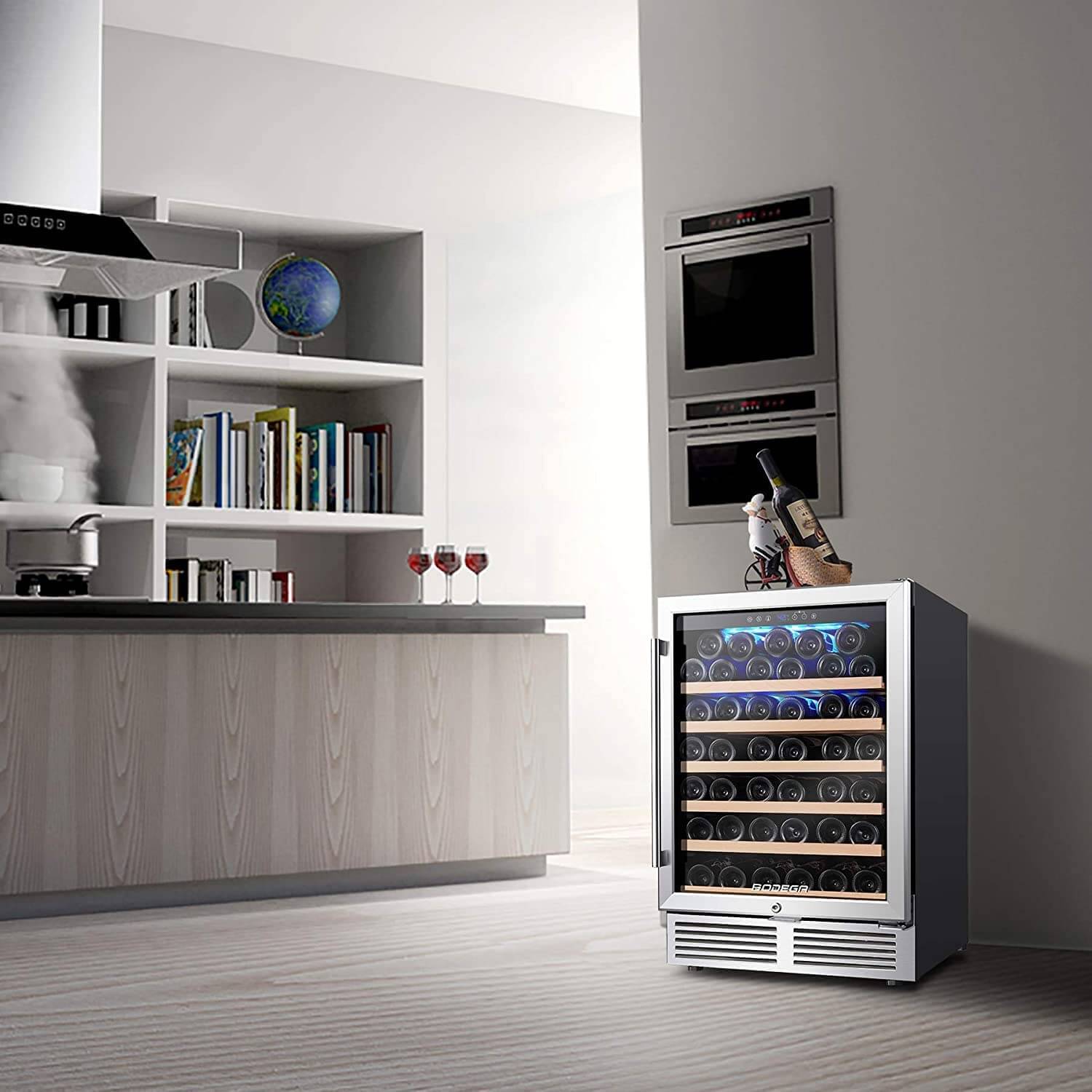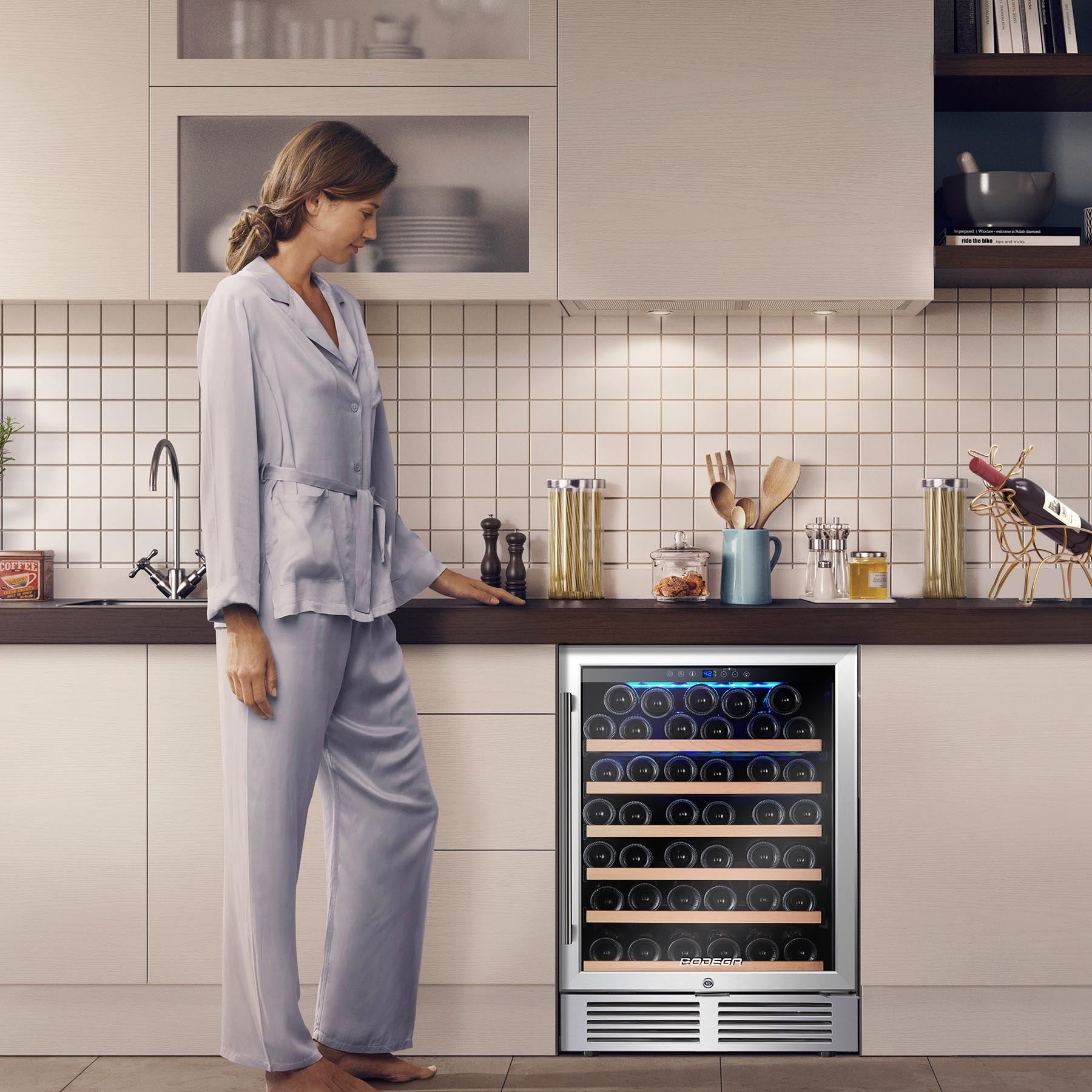Wine fridges have become an essential accessory for wine enthusiasts looking to store and age their bottles under optimal conditions. Whether you're an occasional wine drinker or a passionate collector, choosing the right type of wine fridge can significantly impact your wine experience. Both options offer unique advantages, but understanding their differences is essential in making an informed choice that aligns with your preferences and lifestyle.
Freestanding Wine Fridges: A Balance of Flexibility and Functionality
Freestanding wine fridges offer a versatile solution for storing your wine collection. Their primary allure lies in their flexibility. You can place them anywhere in your home, be it the kitchen, living room, or dining area. These standalone units come in various sizes, accommodating a range of bottle capacities to suit your needs.
Pros:
- Versatility: You can easily relocate a freestanding wine fridge as your preferences change.
- Cost-Effective: They are generally more budget-friendly than built-in options.
- Ease of Installation: No installation is required; just plug it in and start storing your wine.
Cons:
- Aesthetic Consideration: Freestanding wine fridges might not seamlessly blend into your kitchen's design.

Built-In Wine Fridges: Merging Elegance with Functionality
Built-in wine fridges, on the other hand, are designed to seamlessly integrate into your kitchen cabinetry. These units offer a sophisticated and cohesive look, ideal for homeowners seeking a polished and organized aesthetic. They are typically installed in specific spaces, ensuring a seamless fit that complements your kitchen's design.
Advantages and Considerations:
- Aesthetics: Built-in wine fridges blend seamlessly with your kitchen design, providing a polished appearance.
- Space Optimization: They make efficient use of available space, often utilizing under counter or wall niches.
- Temperature Stability: Built-ins can be designed with advanced temperature and humidity control systems.
Considerations:
- Installation Complexity: Professional installation is often required, which might involve additional costs.

See also: Everything You Need to Know About Wine Fridges
Design Harmony and Aesthetics
When it comes to design and aesthetics, freestanding wine fridges offer a variety of options that cater to different styles. You can choose a unit that complements your existing decor or stands as a stylish focal point. However, they might not achieve the seamless integration of a built-in unit in terms of aesthetics.
In contrast, built-in wine fridges are designed to be discreet. They can be customized to match your kitchen's cabinetry, making them virtually indistinguishable from other appliances. This integration creates a harmonious and sophisticated overall look.
Installation and Space Efficiency
Freestanding wine fridges shine in terms of installation simplicity. You can place them virtually anywhere with a power outlet. This flexibility is perfect if you're renting or planning to relocate in the future. Additionally, they come in various sizes to fit different spaces.
Built-in wine fridges, while more complex to install, optimize space efficiently. They often occupy under counter spaces or fit into existing cabinetry niches, making them ideal for kitchens with limited space.
Temperature and Humidity Control
Both freestanding and built-in wine fridges are equipped with temperature control features to ensure your wine is stored at optimal conditions. Some built-in models, however, offer more advanced temperature and humidity management systems, which can be crucial for serious wine collectors.
Flexibility and Future Needs
Freestanding wine fridges are adaptable to changing circumstances. If you move to a new location, redecorate, or decide to reposition your wine collection, you have the freedom to do so effortlessly. They are a flexible choice for those who value versatility.
Built-in wine fridges, while less flexible in terms of relocation, offer a long-term solution. If you're committed to a specific design and are unlikely to change it, a built-in unit can be a sophisticated and lasting addition to your kitchen.
Maintenance and Cleaning: Convenience Matters
Freestanding wine fridges generally offer easier maintenance. Since they are standalone units, accessing and cleaning the interior is straightforward. This convenience can lead to better upkeep and preservation of your wine collection.
Built-in wine fridges, while requiring slightly more effort for cleaning and maintenance, provide a more seamless look. It's essential to balance this convenience with the aesthetics you're aiming to achieve.
Space Utilization and Capacity: Finding the Right Fit
Freestanding wine fridges come in various sizes and capacities, allowing you to choose a unit that suits your collection's size. They are available in compact sizes for smaller collections or larger units for dedicated wine enthusiasts.
Built-in wine fridges are designed to maximize space utilization. They fit snugly under countertops or within cabinetry, making them an excellent choice for kitchens with limited space while still offering ample storage capacity.
Aesthetic Integration: A Blend of Form and Function
Built-in wine fridges excel in aesthetic integration. These units seamlessly merge with your kitchen design, contributing to a polished and cohesive look. If you value a kitchen with a harmonious and streamlined appearance, a built-in wine fridge might be the perfect addition.
Personal Preferences and Lifestyle: Tailoring Your Choice
The choice between freestanding and built-in wine fridges ultimately boils down to your personal preferences and lifestyle. Consider the following questions to guide your decision:
- Do you value adaptability and the ability to relocate the fridge easily? (Freestanding)
- Are aesthetics and a polished, integrated look a top priority for your kitchen? (Built-in)
- How much space do you have available in your kitchen? (Freestanding or Built-in)
- Are you willing to invest more upfront for long-term aesthetics and functionality? (Built-in)
- Do you anticipate changes in your living situation or kitchen design? (Freestanding)
Combining Both Options: The Best of Both Worlds
For wine enthusiasts with extensive collections, a hybrid approach might be the solution. Combining both freestanding and built-in wine fridges allows you to enjoy the benefits of both worlds. Use the built-in unit for showcasing your finest bottles, while keeping a freestanding fridge for easily accessible selections or for additional capacity during gatherings.
Conclusion: Deciding on Your Perfect Wine Fridge
In the freestanding vs. built-in wine fridge debate, there's no definitive winner—only the right choice for your needs and preferences. Both options offer distinct advantages that cater to various lifestyles, design aspirations, and wine collection sizes. By evaluating your priorities and considering factors like aesthetics, space, and future plans, you can confidently choose the wine fridge that complements your lifestyle and enhances your enjoyment of fine wines.
See also: What are the Key Features to Consider When Buying a Wine and Beverage Fridge?
Frequently Asked Questions
What is the main difference between freestanding and built-in wine fridges?
- Freestanding wine fridges are standalone units that can be placed anywhere, while built-in wine fridges are designed to seamlessly integrate into your kitchen cabinetry.
Can a freestanding wine fridge be used as a built-in unit?
- While it's possible, it's essential to consider ventilation requirements to ensure proper cooling performance and longevity.
Do built-in wine fridges require professional installation?
- Yes, built-in wine fridges usually require professional installation due to their specific design and integration requirements.
Can I convert a freestanding wine fridge into a built-in one?
- In some cases, with proper ventilation and modifications, you may be able to adapt a freestanding unit for built-in use.
Which type of wine fridge is more energy-efficient?
- Both freestanding and built-in wine fridges offer energy-efficient options, but specific models and features will vary.







